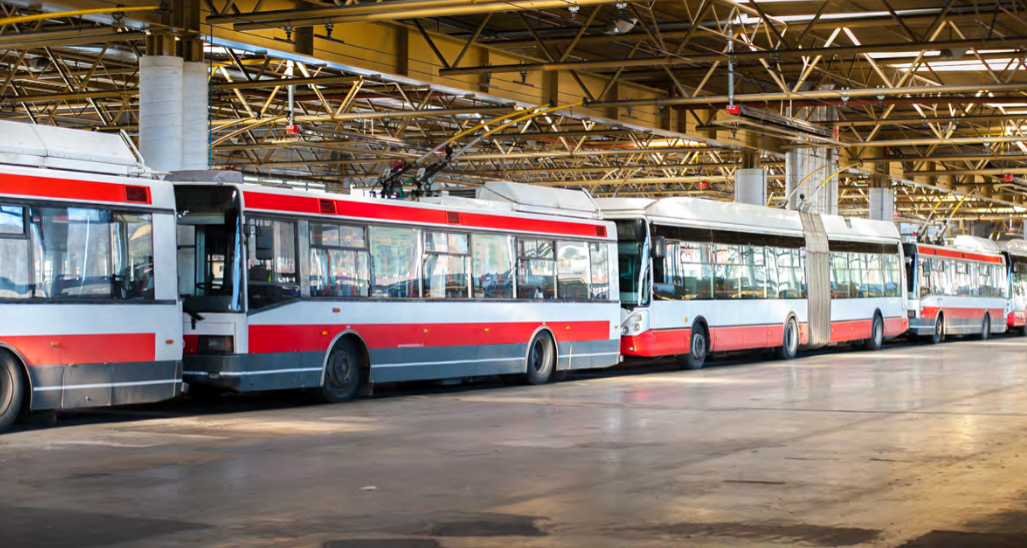Which Tracking Technology Is Best for Transit Hubs and Transport Operations?
In bustling transport hubs—whether it’s a major city bus terminal, a regional coach station, or a busy rail interchange—the movement of people, vehicles, and assets is constant and complex. Efficient tracking of these moving parts is no longer optional. It’s essential to ensure safety, reduce delays, streamline operations, and meet growing passenger expectations.
But which tracking technology is best suited for transit hubs and transport operations? The answer lies not in a single technology but in a platform that brings multiple sources of data together. This is where SmartSpace from Ubisense stands out as a practical and powerful solution.

The Challenge of Transit Environments
Transit hubs present a notoriously difficult environment for tracking systems. With large open spaces, steel structures, underground sections, and high traffic, traditional tracking methods often fall short:
- Passive RFID requires line-of-sight or physical proximity, which is unreliable in high-traffic, multi-level spaces.
- Wi-Fi tracking is prone to interference and lacks the accuracy needed for real-time asset or personnel location.
- Bluetooth Low Energy (BLE) can be cost-effective, but lacks the precision and reliability needed for mission-critical operations.
These technologies can provide pieces of the puzzle, but they often operate in isolation and fail to meet the real-time accuracy needs of complex transport environments.
Integrated Tracking in High-Density Transit Environments
Transit hubs also demand more than accuracy—they require coordination under pressure. Buses reversing into bays, staff accessing maintenance zones, or assets moving between terminals—all of these need not just location data, but intelligent interpretation of it. A single misplaced vehicle or piece of equipment can cause operational gridlock. This is why combining multiple tracking technologies through a unified platform is essential.
A useful example of the real-world complexity in these environments comes from Transport for London’s open data portal, which shows how location and operational data drive decision-making in one of the world’s busiest transport networks.
RTK-GPS: A Powerful Tool for Outdoor Tracking
Real-Time Kinematic GPS (RTK-GPS) is a highly accurate satellite navigation technique that can achieve centimetre-level precision. For outdoor areas of transport hubs—such as bus depots, airport aprons, or coach parking zones—RTK-GPS offers major advantages:
- High precision: RTK can correct GPS signals in real time, reducing errors to within 1-2 cm.
- Reliable coverage: Particularly useful in open areas where line-of-sight to satellites is available.
- Vehicle tracking: Ideal for monitoring buses, trams, and service vehicles in yards or outdoor spaces.
However, RTK-GPS is not without limitations. Its performance deteriorates in covered areas or underground, and it often requires line-of-sight to a base station. RTK-GPS is powerful, but only part of a broader solution.
Ultra-Wideband (UWB): The Gold Standard for Indoor Accuracy
When it comes to tracking indoors or in semi-covered environments like waiting bays or maintenance facilities, Ultra-Wideband (UWB) technology is hard to beat. UWB provides:
- Sub-metre accuracy, even in cluttered or reflective environments.
- Low latency, suitable for real-time alerts and automation.
- High reliability, especially when deployed in busy or metal-heavy transit structures.
Yet, like RTK-GPS, UWB doesn’t operate in a vacuum. Deploying UWB sensors across a large terminal requires infrastructure, maintenance, and integration with broader systems.
Why Transit Operators Need a Unified Platform
But, rather than asking which single technology is best, the better question is: how do we bring the best features of each technology into one operational view?
That’s the approach behind Ubisense SmartSpace—a platform designed to integrate various location technologies, including UWB, RTK-GPS, BLE, RFID, and others. With SmartSpace, transport operators can:
- Visualise all tracked assets on a single interface.
- Generate automated alerts for safety zones or route deviations.
- Link location data with existing operational systems (e.g., maintenance, scheduling, staffing).
This type of integration enables transit hubs to operate more intelligently—adapting to real-time conditions, responding faster to incidents, and optimising passenger flow and vehicle allocation.
Ubisense Operations 360: Bringing It All Together
For larger-scale implementations, Ubisense Operations 360 takes SmartSpace even further by embedding location intelligence across the entire value chain—from scheduling and planning to service delivery and maintenance. For transport networks, this means:
- Enhanced coordination between depot and in-transit operations.
- Improved visibility into service vehicle status.
- Better decision-making supported by real-time and historical analytics.
The Cost of Getting It Wrong
Using the wrong tracking technology—or deploying systems in isolation—can lead to:
- Missed arrivals and delayed departures due to poor vehicle coordination.
- Inefficient use of gates, bays, or platforms.
- Increased risk to passengers or staff from unmanaged vehicle or equipment movement.
- Operational blind spots when systems fail to communicate.
Worse still, the longer these inefficiencies go unaddressed, the harder they become to fix. Siloed systems lead to more siloed thinking.
Conclusion: Don’t Choose a Technology, Choose a Platform
Transit hubs require more than accurate tracking—they need visibility, context, and control. RTK-GPS is excellent for outdoor precision. UWB offers best-in-class indoor tracking. But the real advantage comes from integrating them into a unified platform that provides a live operational picture.
That’s the strength of SmartSpace and Operations 360 from Ubisense: they tie together multiple technologies, remove the blind spots, and allow transport hubs to function as coordinated, responsive environments.
Ready to Improve Visibility and Efficiency in Your Transit Operations?
Discover SmartSpace to learn more about how an integrated approach can transform your transport infrastructure. Or get in touch with Ubisense today to discuss your unique operational needs.
